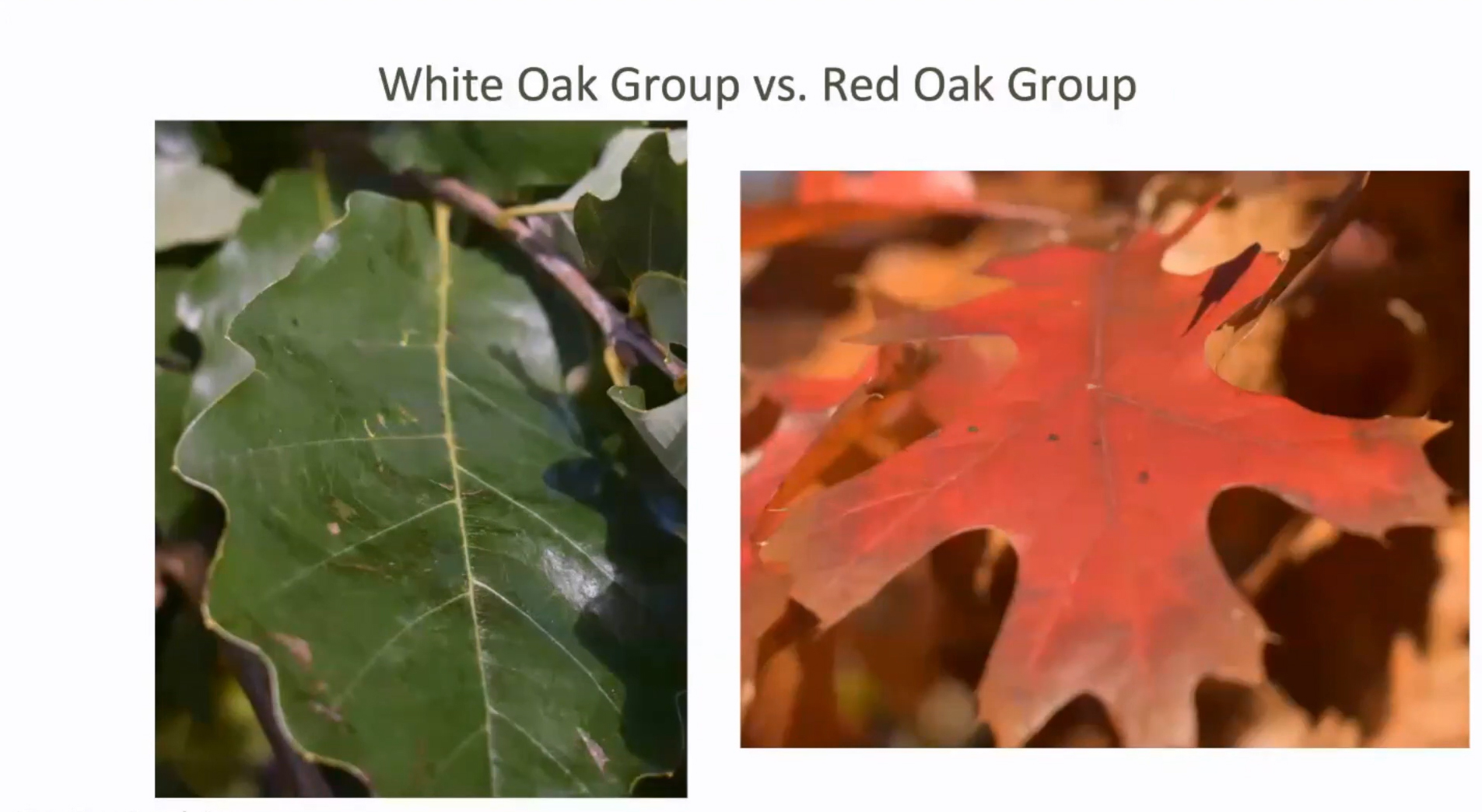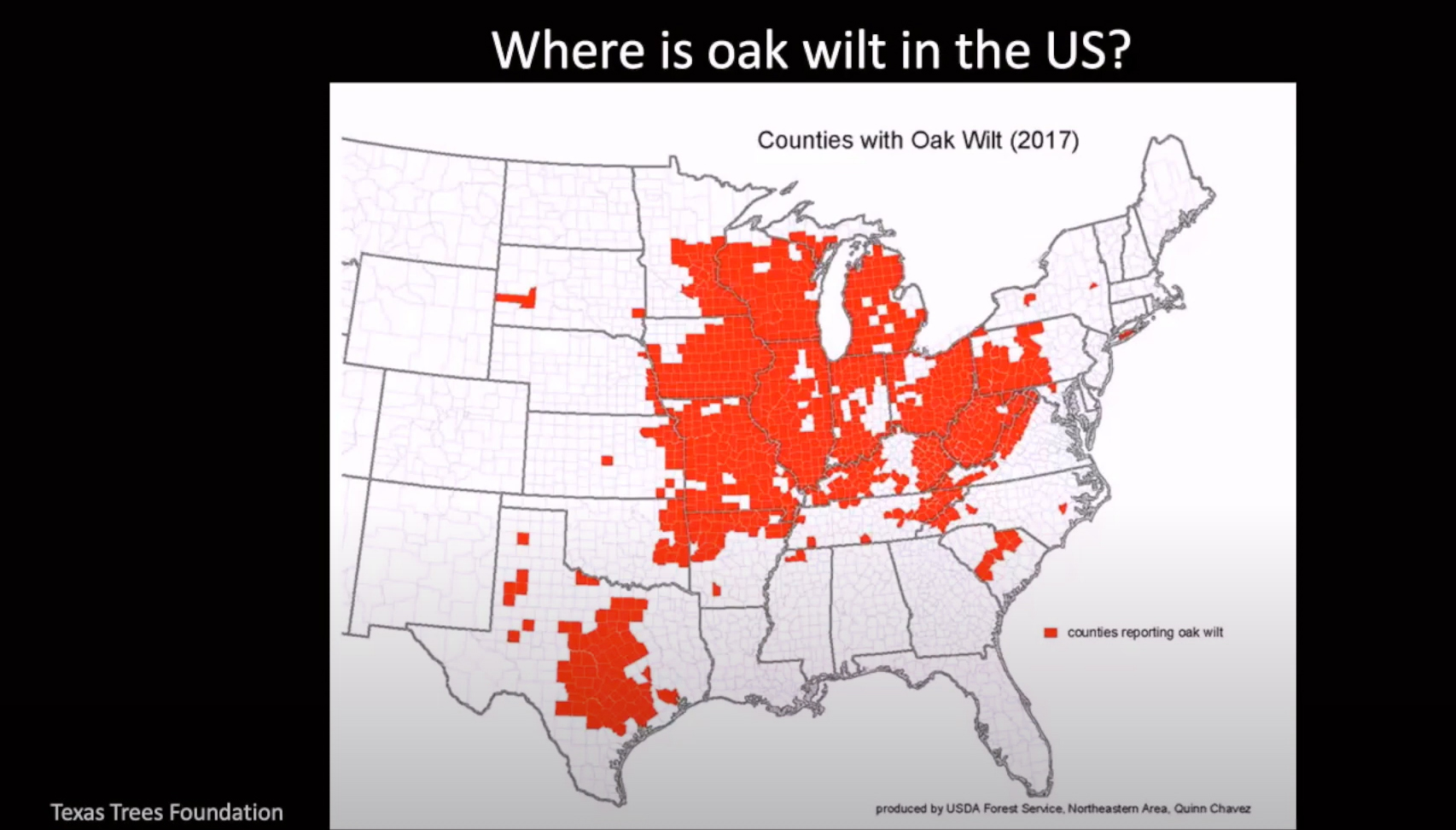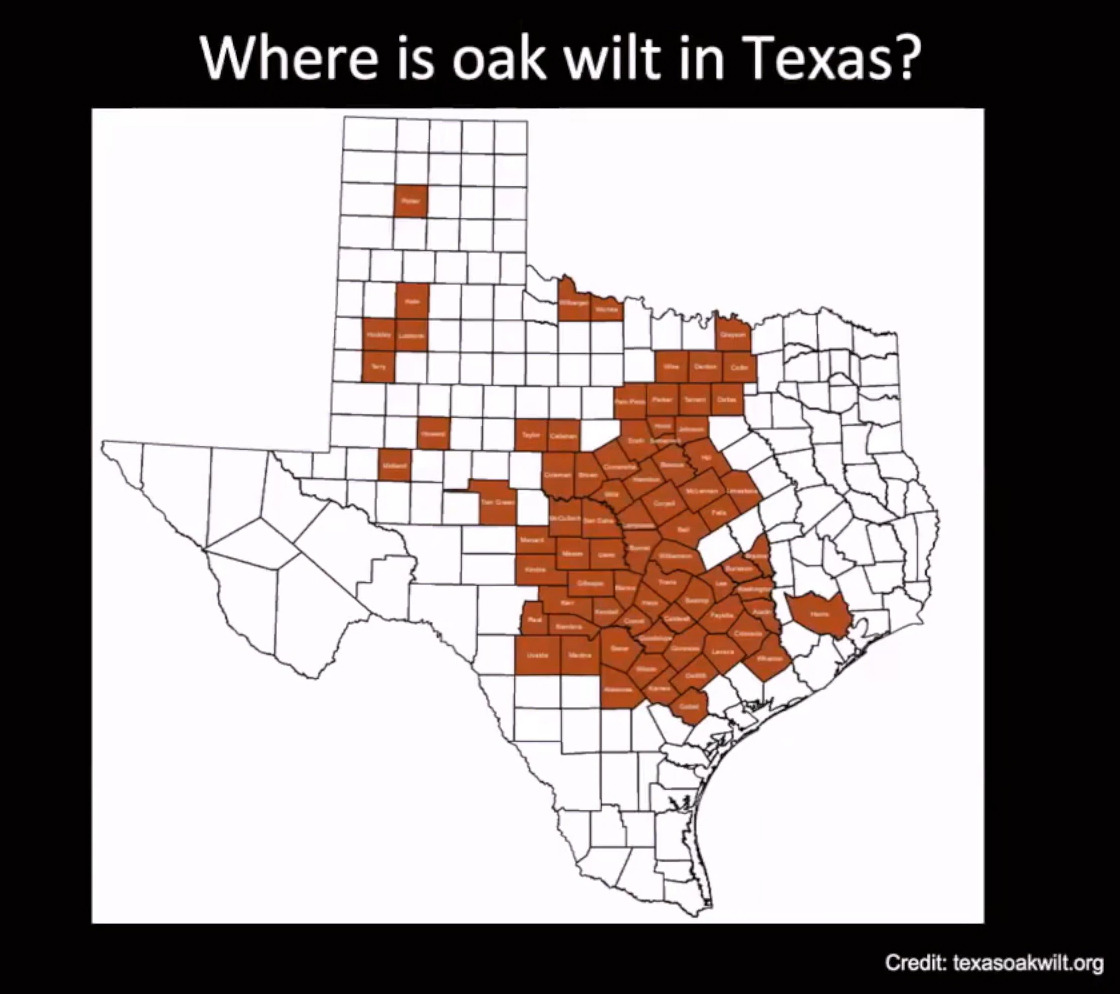Presentation in 2023 to Native Plant Society of Texas
by: Chris Worst, Urban Forest Coordinator & Tree Farm Supervisor, Texas Trees Foundation
Q&A by: Rachel McGregor, Urban Forestry Manager
Oak wilt is an infectious disease caused by the fungus Bretziella fagacearum, which invades and disables the water-conducting system (xylem) in oaks. All oaks can be infected by the fungus that causes oak wilt; however, some oak species are affected more than others. Successful management of oak wilt depends on correct diagnosis and an understanding of how the pathogen and different oak species interact.
Red Oaks: Members of the red oak group, particularly Texas Red Oak(aka Spanish oak), Shumard Oak, Blackjack Oak, and Water Oak are the most susceptible of the fungus and may play a unique role in the establishment of new oak wilt infections.
Live oakand Texas live oak are intermediate in their susceptibility to oak wilt, but are most seriously affected due to their tendency to grow with vast, interconnected root systems that allow movement of the fungus among adjacent trees.
White oaks: Members of the white oak group include post oak, bur oak, Mexican white oak, white shin oak, durand oak, lacey oak, and chinquapin oak. Although white oaks show some tolerance of the disease, all oakscan be infected by the fungus. White shin oak, Lacey oak, and chinquapin oak can grow in stands with interconnected root systems, enabling the fungus to possibly infect adjacent trees that are susceptible to the fungus.
February 1- the end of June is peak time for oak wilt in Texas. To decrease risk from oak wilt do not prune, unless there is an emergency, and avoid wounding your oak trees during this time. Foliar symptoms, patterns of tree mortality, and the presence of fungal mats can be used as indicators of oak wilt. However, laboratory isolation of the fungus is recommended to confirm the diagnosis. A certified arborist should be contacted when in doubt.
Foliar (leaf) symptoms on live oaks
Leaves on diseased live oaks often develop chlorotic (yellow) veins that eventually turn necrotic (brown), a symptom called veinal necrosis. This is the most commonly seen foliar symptom on live oaks that are infected with oak wilt. Another symptom that leaves can exhibit is vein banding, where the leaf vein is a darker green than the rest of the leaf. Tip burnor margin burn, which turns the edges of the leaf brown, can also be seen on leaves. Defoliation may be rapid, and dead leaves with brown veins often can be found under the tree for months after defoliation.
Patterns of tree mortality: Most live oaksdefoliate and die within 3 to 6 months following initial appearance of symptoms. Some live oaks take longer to die, and a few untreated trees may survive many years in various stages of decline. Occasionally, a few live oaks in an oak wilt center may escape infection and remain unaffected by the disease.
Red oaksnever survive oak wilt and often die within 4 to 6 weeks following the initial appearance of symptoms. During summer months, diseased red oaks can often be spotted from a distance because of their bright, autumn-like coloration in contrast to the surrounding greenery. This symptom is called flagging.
Awareness is important when identifying oak wilt. There are four primary approaches used for oak wilt management in Texas. Successful control usually depends on an integrated program incorporating measures from all four approaches. The first approach attempts to prevent the formation of new oak wilt infection centers by eliminating diseased red oaks, handling firewood properly, proper timing of pruning, and painting wounds on healthy oaks. The second approach involves trenching or other measures to disrupt root connections responsible for root transmission of the pathogen. The third approach is the injection of the fungicide propiconazole into individual, high-value trees to help reduce crown loss and extend the life of the tree. The fourth approach is to consider planting other tree species to create diversity in the landscape and to mitigate the impact of oak wilt. These measures will not cure oak wilt but can significantly reduce tree losses.
Regardless of season, immediately paint all pruning cuts and other wounds to oaks. Any kind of wound dressing or paint can be used, and all are equally effective at preventing infections from fungal spores when applied immediately. Avoid pruning or wounding oaks from February 1st through June 30th. As an exception, pruning can be conducted to:
- accommodate public safety concerns such as hazardous limbs, traffic visibility or emergency utility line clearance
- repair damaged limbs (from storms or other anomalies)
- remove limbs rubbing on a building or against other branches, or to raise low limbs over a street
- accommodate required clearance on construction sites where schedules take precedence
- remove dead branches where live tissue is not exposed
- Pruning for other reasons (general tree health, non-safety related clearance or thinning, etc.) should be conducted before February 1st or after June 30th.
- Debris from diseased red oaks should be immediately chipped, burned or buried.
The least hazardous periods for pruning are during the coldest days in winter and extended hot periods in mid to late summer. The best time to prune oaks is during late fall. Regardless of the reasons or time of year, proper pruning techniques should be used. These techniques include making proper pruning cuts and avoiding injurious practices such as topping or excessive crown thinning. As a general guideline for pruning, clean all pruning tools with 10% bleach solution or Lysol™ between sites and/or trees.



